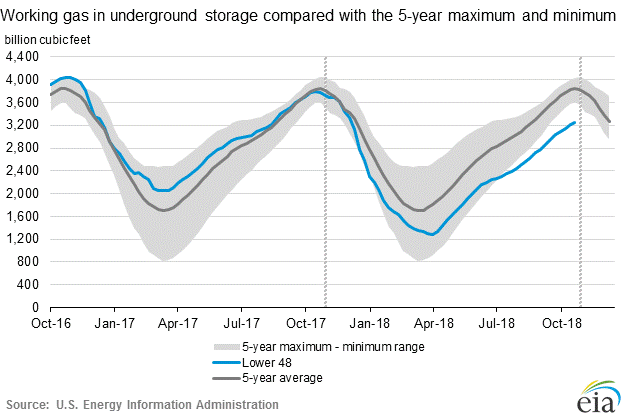Natural gas prices saw a whirlwind of change this week as it soared up Wednesday just to plummet on Thursday. The mid-week rise took prices above $4.80 per million British thermal units, the highest since February of 2014. The next day’s decline brought prices down nearly $0.80 to $4.038 per MMBtu, the biggest session percentage drop since February of 2003.
A few variables factor into these volatile changes; most immediately being the early onset of cold weather in much of the United States. With forecasts of an unusually cold upcoming winter, weather analysts believe natural gas prices could even stretch as high as $7-$8 MMBtu if December and January are really cold. “2018 has been a year of weather extremes in the US, including the coldest April in 35 years, the hottest May-Sept on record, and the first colder-than-normal Oct in 9 years,” Morgan Stanley said in a note. “November is following the trend, with the current forecast one of the coldest since 2000.”
Additionally, natural gas inventories have also played a heavy hand in the ups and downs of the week. Inventories are at a 15-year low for this time of year and with slim storage to rely on should colder weather suddenly arise, pricing volatility will inevitably continue. Thursday’s drop in price came immediately following the release of updated storage data. “With storage certain to be low throughout winter, expect volatility to remain elevated relative to normal,” said Robbie Fraser, a global commodity analyst at Schneider Electric Global Research & Analytics, in a note.
Natural gas shortages should clear up heading into next year, but depending on how the next few months of weather pan out, we could see some major price increases in this market.
https://oilprice.com/Energy/Gas-Prices/Natural-Gas-Markets-Remain-Ultra-Tight.html




